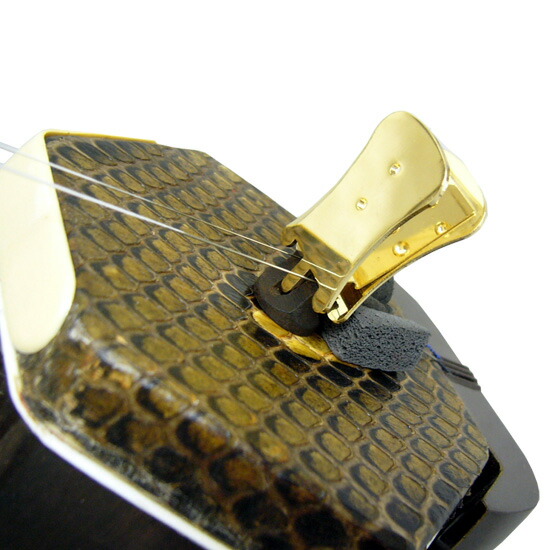I don't recommend using a mute when you're playing too often for you won't be able to learn how you actually sound like and what mistakes you won't be able to catch when using a mute.
...but...practicing with a mute can also improve ur bowing strength...since you might want to play louder to hear yourself.
Also be careful when using this if u have a gud bridge. Also, since the vibrations are less intense as without a mute, the erhu's snakeskin is not affected...meaning if u have a new erhu, it'll take longer to break in, and it'll also last longer, in terms of lifespan...theoretically. The pencil/dongle method also relieves the snakeskin from pressure so...DOUBLE!! (unless ur erhu is exposed to weather/temp change)
Method 1
Something you could do is by making a mute. Use a pencil or dongle to place above the bridge, like this.
In some cases, the object could replace the bridge of the erhu. Make sure the object is placed perfectly horizontal and covers the snakeskin entirely across unless it will become more out of tune. The object is meant to touch the strings nice and snug.
Pros: -Works well in terms of volume
-easy to set up
-BONUS!!!: also relieves tensions on the snakeskin (AKA ur erhu lasts longer[in bed jk])
Cons: -"shortens" the string so finger positions may alter slightly
-the instrument will not be tuned as without a mute.
-it will have a "buzzy" and muffled sound
-may damage snakeskin during equipping
Method 2
Another option you could do is by using a big ass clip or something that could fit.
is this image blurry or do i need new glasses?
Pros: -works well in both volume and tuning
-does not "shorten" the string as in the previous method
-does not damage any part of the erhu when applying
Cons: -makes the sound "muffled"
-may be hard to clamp the bridge on
-moves the bridge around, affecting the tuning
-very slightly changes the tuning
Method 3
Another option is to use an eraser or something to cover the strings to stop the vibrations.
You can just get an eraser block and cut out notches to place on the erhu.
Pros: -easy to make if u dont wanna waste $$$
-easy installation
Cons: -each string may not have equal volume if ur using an eraser
-it will fall off after playing a while cuz of the vibrations

Method 4
Or, another way is to just simply buy a mute. It works better than any of the methods listed above.

Pros: -works well in both volume and tuning
-does not physically affect the erhu
-easy to apply and buy
Cons: -produces a "muffled" sound
-the mute vibrates and makes a buzzing sound
-not as quiet as the pencil/dongle trick























